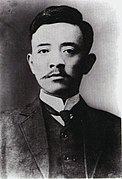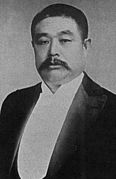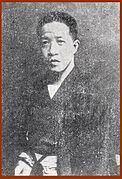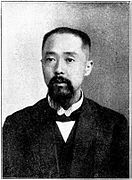
The president of the Republic of China is the head of state of the Republic of China (ROC). Since 1996, the president is directly elected by plurality voting to a four-year term, with at most one re-election. The incumbent, Tsai Ing-wen, succeeded Ma Ying-jeou on 20 May 2016 as the first female president in the country's history.

The Legislative Yuan is the unicameral legislature of the Republic of China (Taiwan). The Legislative Yuan chamber is located in Taipei. Legislative Yuan is composed of 113 legislators, which are directly elected by people on Taiwan, Pescadores, as well as people on the Kinmen and Matsu island groups off of mainland China through a parallel voting for a 4-year term. Like parliaments or congresses of other countries, the Legislative Yuan is charged with the passage of legislation, which are then sent to the President for signing. For these similarities, it is also common for people on Taiwan, Kinmen, and Matsu to refer to the Legislative Yuan as “the parliament”.

Song Jiaoren was a Chinese republican revolutionary, political leader and a founder of the Kuomintang (KMT). Song Jiaoren led the Kuomintang Party to electoral victories in China's first democratic election. He based his appeal on the upper class gentry, landowners, and merchants. Historians have concluded that provisional president, Yuan Shikai, was responsible for his assassination on March 20, 1913.

The Constitution of the Republic of China is the fifth and current Chinese constitution, ratified by the Kuomintang during the Constituent National Assembly session on December 25, 1946, in Nanjing, and adopted on December 25, 1947. Since 1949, the constitution, along with its Additional Articles, remains effective in ROC-controlled territories.

The History of the Republic of China begins after the Qing dynasty in 1912, when the formation of the Republic of China as a constitutional republic put an end to 2,000 years of imperial rule. The Manchu-led Qing dynasty ruled China proper from 1644 to 1912. The Republic experienced many trials and tribulations after its founding which included being dominated by elements as disparate as warlord generals and foreign powers.

This is a timeline of the Republic of China.
The debate over the definition and application of democracy to China has been one of the major ideological battlegrounds in Chinese politics since the 19th century. Modern Chinese leaders state that they run a "socialist democracy" in which the Communist Party of China is the central authority that acts in the interest of the people and approves which political parties can run. Many foreign media outlets, however, describe China as totalitarian, authoritarian, soft authoritarian, as a surveillance state, or as a dictatorship. The Democracy Index, produced by the Economist Intelligence Unit, for instance, gives China a 3.1 out of 10 and classifies its government as authoritarian.

An election for the National Assembly took place in Taiwan on Saturday, 14 May 2005, from 07:30 to 16:00 local time. It elected an ad hoc National Assembly whose only function was to serve as a constitutional convention in order to approve or reject amendments to the Constitution of the Republic of China already proposed by the Legislative Yuan. The results indicated that the amendments would be approved, as the parties supporting them won an overwhelming majority, and indeed the amendments were passed on 7 June 2005. The election was carried out using purely the party-list proportional representation system. The official campaign period was 07:00 to 22:00 each day from 4 May 2005 to 13 May 2005. Official election broadcasts by the ad hoc coalitions and (established) parties were provided by the Public Television Service Taiwan on 7 May 2005; several unofficial debates were also arranged. Notably, this election saw the temporary breakdown of the traditional two-coalition system in Taiwanese politics: instead of dividing into the Pan-Green Coalition and Pan-Blue Coalition over the political status of Taiwan, the parties divided themselves into larger and smaller parties, with the larger Democratic Progressive Party and Kuomintang in support of the amendments and the smaller People First Party and Taiwan Solidarity Union against them.

The Beiyang government, officially the Republic of China, also sometimes spelled Peiyang Government or the First Republic of China, refers to the government of the Republic of China which sat in its capital Peking between 1912 and 1928. It was internationally recognized as the legitimate Chinese government.

The Nationalist government, officially the National Government of the Republic of China, also known as Second Republic of China but most commonly known as the Republic of China, refers to the government of the Republic of China between 1 July 1925 and 20 May 1948, led by the Kuomintang. The name derives from the Kuomintang's translated name "Nationalist Party". The government was in place until it was replaced by the current Government of the Republic of China in the newly promulgated Constitution of the Republic of China.
The Constitutional Protection Movement ; pinyin: Hùfǎ yùndòng) was a series of movements led by Sun Yat-sen to resist the Beiyang government between 1917 and 1922, in which Sun established another government in Guangzhou as a result. It was known as the Third Revolution by the Kuomintang. The constitution that it intended to protect refers to the Provisional Constitution of the Republic of China.
The First Legislative Representative Election of the Republic of China, and the preceding 1947 National Assembly Election were the Republic of China's first public direct elections since its founding. At the time most of China's territory was under the control of the Government of the Republic of China, using a direct voting system elected 759 Legislative Representatives. Using the Republic's then 461 million population to calculate, on average 600,000 people elected one representative in the Legislature. The election along with the one held for the National Assembly also made China the largest democracy at the time.
In the history of political parties in China, the first major party in China was the Kuomintang (KMT), which moved to Taiwan in 1949. It was founded in Guangdong Province on August 25, 1912 from a union of several revolutionary groups. The Republic of China was founded by Kuomintang's leader Dr. Sun Yat-sen later that year. In 1921, the Communist Party of China (CPC) was founded by Chen Duxiu and Li Dazhao in Shanghai as a study society, and an informal political network.
The Government of the Republic of China, also known retroactively as the Government of Nationalist China, is the unitary government that exercises control over Taiwan and other islands in the free area. The president is the head of state. The government consists of Presidency and five branches (Yuan): the Executive Yuan, Legislative Yuan, Judicial Yuan, Examination Yuan, and Control Yuan.
The Progressive Party was a political party in the Republic of China from 1913 to 1916.

The Republic of China National Assembly elections, 1918, held in May to June, were the elections for the second National Assembly of the Republic of China. The bicameral assembly consisted of a senate and a house of representatives. Representatives were directly elected while senators were elected by provincial assemblies.

The Provisional Government of the Republic of China was a provisional government established during the Xinhai Revolution by the revolutionaries in 1912. After the success of the Wuchang uprising, revolutionary provincial assembly representatives held a conference in the district of Wuchang, China, which framed the organizational outline of the Provisional Government.

The Republic of China (ROC) was a sovereign state based in mainland China between 1912 and 1949 prior to its retreat to the island of Taiwan. It was established on 1 January 1912 after the Xinhai Revolution, which overthrew the Qing dynasty, the last imperial dynasty of China.

The Republican Party was a short-lived political party in the Republican era of China from 1912 to 1913.
The National Assembly was the legislative branch of the Beiyang government during the Republican era of Chinese history. The National Assembly was first founded in 1913, following the overthrow of the previous Qing dynasty, as the first free democratic legislature in Chinese history. It was disbanded less than a year later as President Yuan Shikai assumed dictatorial power and declared himself the Emperor of China. During the Warlord Era, the National Assembly was resurrected and disbanded more than once as different warlords vied for power and legitimacy.















